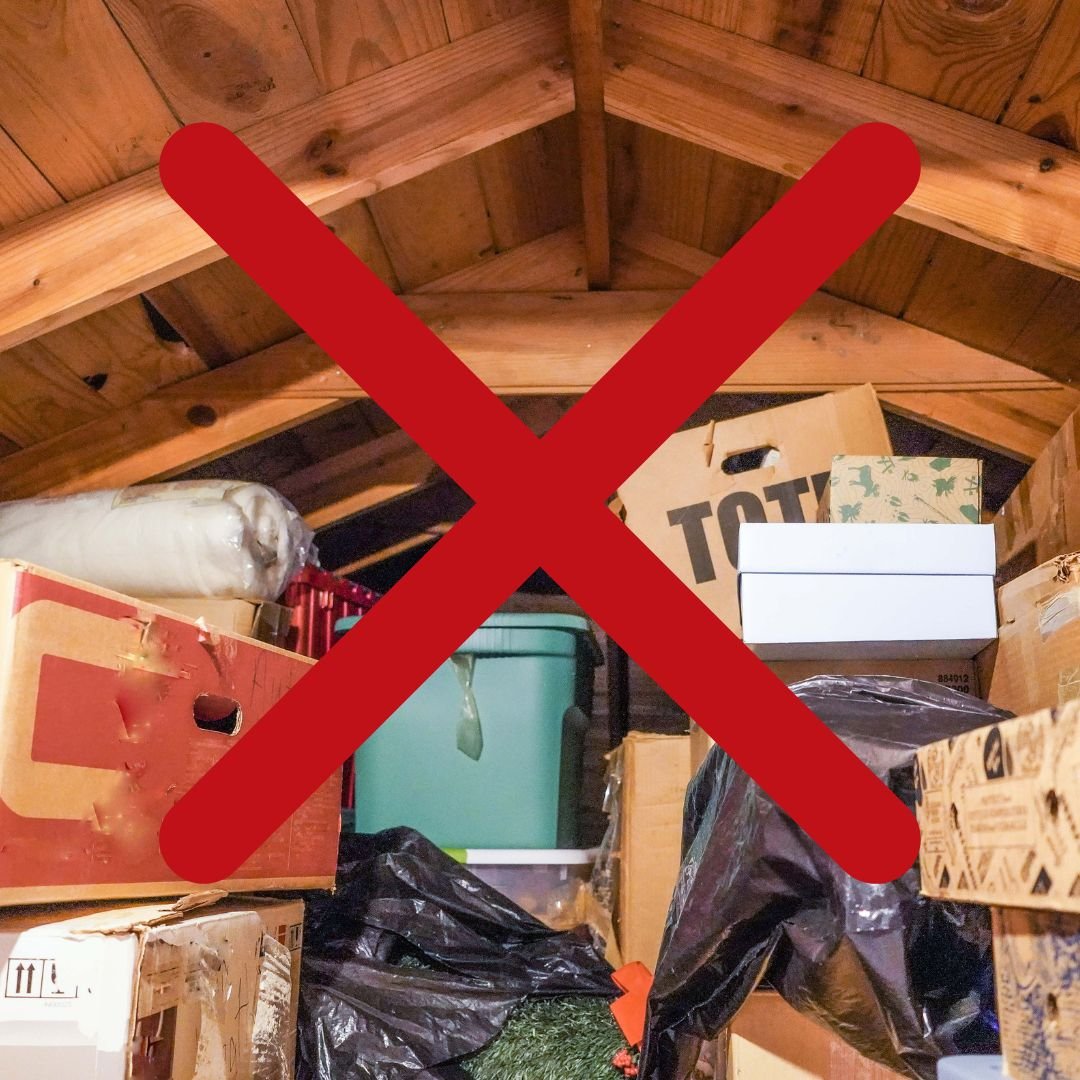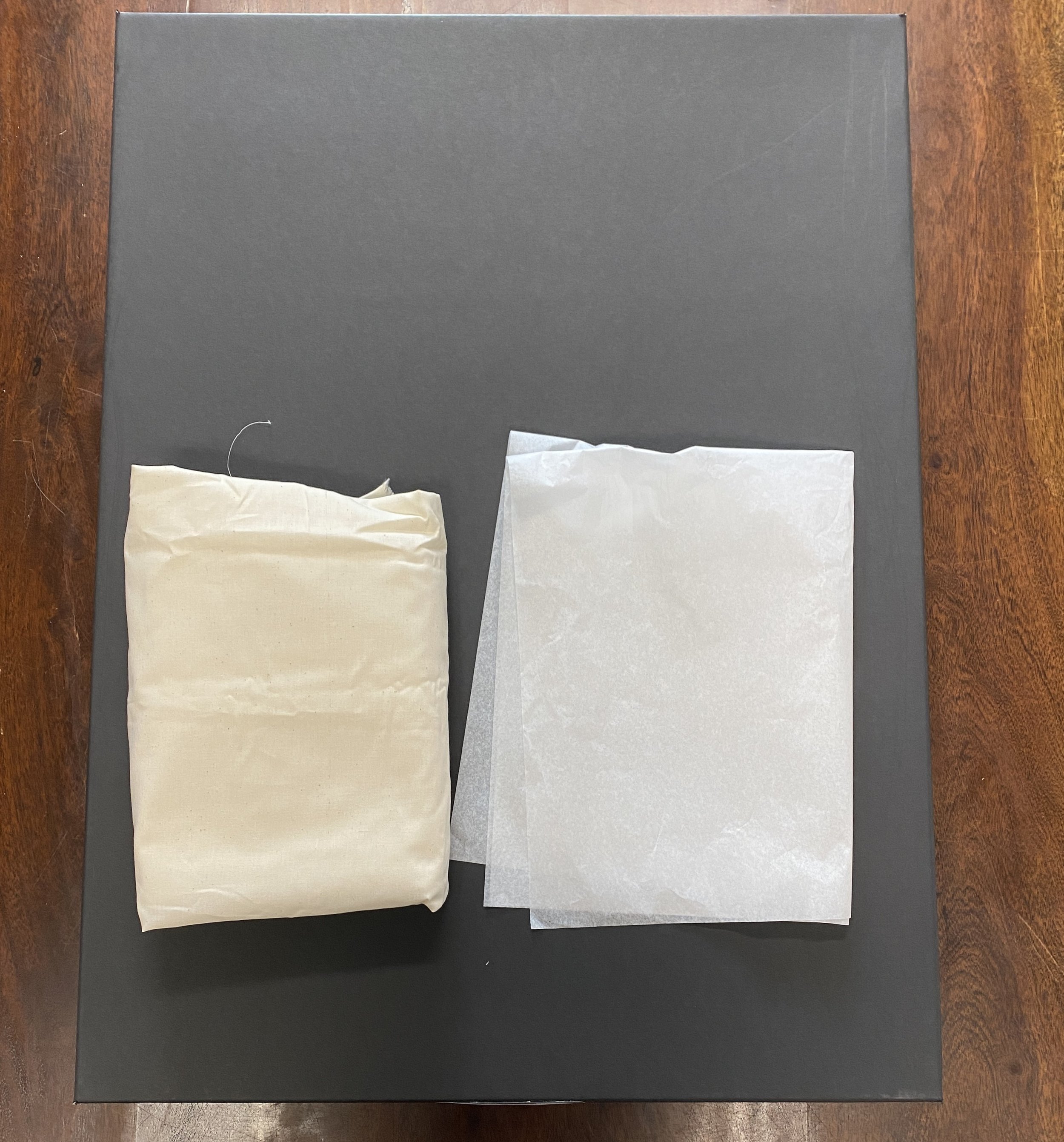Collections Care: Textiles
Some of our most asked “how can I take care of this at home” questions are about textiles, specifically clothing. Lucky for us, both our Collections Manager Sara Wright and former Collections Intern Emma Marentette (trained textile conservator) are passionate about all things textile. Here are some of their tips and tricks to preserve your textiles at home.
You probably have some clothes, tucked away in the back of a closet or up in an attic, that you keep, even though you will never wear them again. Clothes can be holders of precious memories. Whether it’s the clothes you wore to a high school dance, a shirt a beloved sister bought you, or a dress your favourite aunt sewed for you, you’ll want to keep reading for tips to keep them safe.
Many of the steps a museum takes to care for their textiles are things you can do at home!
To Clean or Not to Clean?
First things first, your textiles should be clean. Storing a dirty or soiled textile can cause lasting damage and could attract insects or rodents. If your textile is delicate, hand-wash it with a light, unscented, dye-free soap. Still worried about washing it? Try spot cleaning (gently cleaning only the areas that are dirty) as opposed to washing the entire garment or other textile.
Location, Location, Location! Where to store your textiles
One of the best things you can do to improve the lifespan of your clothes is to improve their storage location. Damp basement? Hot Attic? Garage that may or may not have mice? Sentimental and valuable clothes should be kept inside the house, specifically in a part of the house you live in. Like many things (including us), clothing does not do well with spikes or big drops in temperature and humidity. Huge variation of either can lead to damage. Luckily, textiles will keep well in the same environment that we find comfortable. Any part of your house that is climate-controlled will be an ok place to keep your precious objects. This climate should prevent mold, cracking, embrittlement, or even the breaking down of more robust fabrics like polyester, acrylic, and nylon, which are all plastic-based.
No wire hangers! Tips for hanging textiles
Now that you have a suitable location, how will you store your item? Clothes that are in excellent condition, such as your dad’s leather jacket that still smells like him – those could potentially be kept on a hanger. But not the flimsy wire kind from the dry cleaner: something sturdy with a big surface area that will support the shoulders. It’s easy to make padded hangers to provide extra support. We make ours with cotton batting and medical stockinette. You can go a step further and keep these clothes in a garment bag, so that they don’t risk getting caught on other items in the closet. We had ours made by an amazing volunteer from old sheets! The important thing is to make sure there is still some air flow to prevent trapping off-gas. All materials break down as they age, creating off-gas, which can be harmful to the objects if it doesn’t have space to dissipate.
Anything that is very heavy, that is fragile, that is made of a knit fabric, that has beading on it, or that is clearly deformed by the hanger should not be hung. These items should be stored flat in a box.
Life is like a box of … Textiles: Tips on flat storage
The type of box or container you choose matters. The best choice is a museum-quality acid-free box, but we know those aren’t readily available. It’s important to not just use any cardboard box. Most boxes are made of poor quality materials that off-gas harshly and can damage and stain your clothing.
The next best choice after an acid-free box is a sturdy plastic bin. Ideally, you should be getting something made from polyethylene or polyester. These plastics don’t off gas as much as other plastics, so won’t impact your items as much. If your bin is clear, you will want to make sure it is kept in a dark room, closest, or under your bed! This way the light (one of the more common sources of damage when it comes to textiles) doesn’t do damage without you knowing about it!
Textile box, muslin, and acid-free tissue paper - all the things we’re going to use to store Lorraine Swift’s 1946 wedding dress!
When choosing a bin, bigger is better. Ideally, the garment should be able to lay flat without any folds in it. Folds cause creasing, and this is a source of stress for the garment. If you do need to fold something, do it as few times as possible and try to pad those folds. At the museum, we use acid-free tissue paper, but the same effect can be achieved by rolling up some plain white cotton like old sheets (are you seeing a theme here? Old sheets are amazing after they have served their original purpose!) or muslin if you have it. We also recommend having a layer in between each garment, so that if you have a humidity issue, the buffer layer will absorb any colour transfer that might happen. It’s also important not to overfill your bin, so you aren’t crushing the garment on the bottom!
Okay, so this is where we break everyone’s hearts a little . . . one of the worst places to keep your heirloom textiles is in a wooden hope or memory chest. Ever have a white clothing item turn yellow after being in a wood chest for a while? This is because wood is another big emitter of harmful off-gas. The gas gets trapped in the chest, and the textiles absorb it, often resulting in yellow staining that is hard, if not impossible to remove. While long thought to protect your items from insects, cedar is not actually effective in warding off insects.
Speaking of insects…
Insects are a problem for several types of textiles – wool, possibly silk, and certainly anything with fur or feathers. Linen, cotton, and synthetics will not be a tasty treat for moths or beetles. Insects can be kept at bay with good housekeeping practices, closed storage containers, keeping an eye out for fluttering moths, insect screens on your doors and windows, and a regular check of your precious item. A check twice a year will help make sure that you don’t have any unwanted houseguests. This check should involve opening the box and looking all over the garment – does it have new holes? Are there dead insects in the box? Are there insect eggs in the box? All of these are bad signs. If you have insects, you can put your garment in a plastic bag and put it in a chest freezer for a few weeks. This should kill any active infestations.
You’ve stored it, now what do you do?
Once your garment is carefully stored, you can put it away. You could choose to label the outside of the box, to inform other people about what is inside, and why it is precious, or to warn a housemate against piling their dirty laundry on top.
During your biannual insect check, you can do a more generalized condition assessment. Is your garment yellowing? Are beads falling off? Is the silk shattering? Noting an issue early can be helpful in preventing a bigger problem down the road. However, these issues may not be something you can manage on your own. In this case, you can consider contacting a conservation professional. They can advise you about your individual case.
Resources
Talk to your friendly neighbourhood Collections Manager if you have questions or concerns! It’s our goal to make everyone feel confident in taking care of their family’s history.
Archival supplies (boxes, tissue): Carr McLean, Brodart, or the Container Store
Plastic Containers: Canadian Tire, Home Depot, Rona
Pre-made garment bags: Wawak
Find a conservation professional in Canada: Canadian Association of Professional Conservators, Canadian Association for Conservation of Cultural Property
















